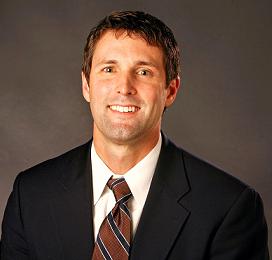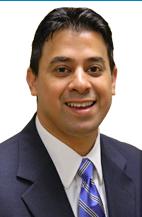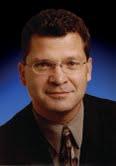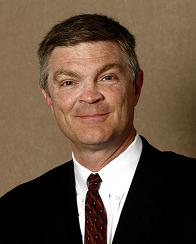Here four orthopedic surgeons and sports medicine physicians discuss five of the largest issues affecting the field of sports medicine.
 1. Injury prevention. Sports medicine physicians and orthopedic surgeons have long had a grasp of how to repair the structural damage inflicted by sports related injuries, but the future of sports medicine is shifting towards the possibility of preventing the occurrence of injuries. "There has been a real growth of injury prevention programs. We have taken them to schools, professional sports teams and college teams," says David Geier, MD, orthopedic surgeon based in Charleston, N.C.
1. Injury prevention. Sports medicine physicians and orthopedic surgeons have long had a grasp of how to repair the structural damage inflicted by sports related injuries, but the future of sports medicine is shifting towards the possibility of preventing the occurrence of injuries. "There has been a real growth of injury prevention programs. We have taken them to schools, professional sports teams and college teams," says David Geier, MD, orthopedic surgeon based in Charleston, N.C.
"A large part of preventative care is personalizing the care of the athlete. Who is at risk for what and why? These risk factors might be genetic, environmental, biomechanical, neuromuscular, training technique or sports specific. Identifying which risk factors are modifiable and addressing these to specific patients is key" says Christopher Kaeding, MD, Director of The Ohio State University Sports Medicine Center in Columbus.
 ACL injury in female athletes is one of the most salient issues being addressed by sports medicine physicians focused on injury prevention. Physicians are beginning to understand why ACL injuries are so prevalent in female athletes. "Now that we know the proprioceptive and kinematic difference between male and female athletes we can build programs to address these differences. It is not as simple as handing out information; it is muscle memory. Athletes must learn the right way to do something and do it over and over again," says Aman Dhawan, MD, of University Orthopaedic Associates in Somerset, N.J. The key to injury prevention is patient education.
ACL injury in female athletes is one of the most salient issues being addressed by sports medicine physicians focused on injury prevention. Physicians are beginning to understand why ACL injuries are so prevalent in female athletes. "Now that we know the proprioceptive and kinematic difference between male and female athletes we can build programs to address these differences. It is not as simple as handing out information; it is muscle memory. Athletes must learn the right way to do something and do it over and over again," says Aman Dhawan, MD, of University Orthopaedic Associates in Somerset, N.J. The key to injury prevention is patient education.
2. Patient interaction beyond the OR. Many orthopedic sports medicine physicians limit their practice to patients that will require surgery. "We cannot present ourselves as only surgical interventionalists. We need to be in the training room and on the sidelines," says Richard Hinton, MD, medical director of MedStar Sports Medicine in Baltimore, Md.
 Dr. Hinton urges sports medicine physicians and orthopedic surgeons to become involved with athletic governing bodies. "You need to have a clinical voice at the table. When you look at sports, nothing has a bigger impact on injury reduction than standardized rules, coaching and official certification that is sport specific," says Dr. Hinton. The more involved physicians are with the rules governing how sports are played and the more present they are during athletic activity, the stronger injury prevention programs will become.
Dr. Hinton urges sports medicine physicians and orthopedic surgeons to become involved with athletic governing bodies. "You need to have a clinical voice at the table. When you look at sports, nothing has a bigger impact on injury reduction than standardized rules, coaching and official certification that is sport specific," says Dr. Hinton. The more involved physicians are with the rules governing how sports are played and the more present they are during athletic activity, the stronger injury prevention programs will become.
Sports medicine physicians can help build current injury prevention programs, but they also play a critical role in ensuring that these programs survive. Sports medicine physicians not only have a responsibility to education patients, but a responsibility to educate others in the sports medicine field. "We need to get across to our young orthopedic surgeons that the care of the musculoskeletal system is not just surgical. They need to understand the holistic approach to the care of the athlete. If we don't, we risk losing control of our patient base and the recognition of sports orthopedics as a true subspecialty," says Dr. Hinton.
3. Cartilage restoration and preservation. One of the largest questions in sports medicine is how to go beyond the repair of structural damage and to completely reverse the effects of an injury. "We have never been able to completely reverse injuries, especially in articular cartilage. We can't make it new and pristine, says Dr. Geier. Many sports medicine physicians think that the answer lies in biologics.
 "With respect to cartilage health or preventing arthritis, we need to find ways to avoid or minimize the degenerative process of the unhealthy joint. How we can interrupt that destructive process is crucial to long-term joint health. New cartilage restoration techniques address acute cartilage defects in young patients, but cartilage preservation techniques are needed to slow down the degenerative process in patients with cartilage insult or injury," says Dr. Kaeding. "The biggest clinical question in sports medicine is how to enhance biologic healing." Sports medicine physicians are exploring areas such as platelet-rich plasma injections and combinations of growth factors to answer this question.
"With respect to cartilage health or preventing arthritis, we need to find ways to avoid or minimize the degenerative process of the unhealthy joint. How we can interrupt that destructive process is crucial to long-term joint health. New cartilage restoration techniques address acute cartilage defects in young patients, but cartilage preservation techniques are needed to slow down the degenerative process in patients with cartilage insult or injury," says Dr. Kaeding. "The biggest clinical question in sports medicine is how to enhance biologic healing." Sports medicine physicians are exploring areas such as platelet-rich plasma injections and combinations of growth factors to answer this question.
"At Rutgers- Robert Wood Johnson Medical School, we are evaluating enhancement of allograft tissue healing such that it more closely mimics the incorporation of autograft tissue. If we can biologically enhance allograft healing, we then have a very available graft source for a number of surgical reconstructions, such as ACLs, without the donor site morbidity or graft limitations of using autograft, and without the current challenges of allograft healing including increased failures in certain patient populations," says Dr. Dhawan.
Currently, PRP injections are not covered by health insurance companies. Many articular restoration procedures do not have the long term data needed to attract payer support. "We have to be diligent about collecting outcomes data," says Dr. Hinton. The more data collected, the more likely these procedures will receive insurance coverage and the more physicians can learn from one another.
4. Physician consolidation. The entire medical field is experiencing a sweeping move towards consolidation. Though private practices still remain a viable option, many physicians will sacrifice a certain amount of independence for the security of hospital employment. "We will see this continual shift towards hospital employed sports medicine physicians. Sports medicine programs will be hospital programs and private practices will continue to struggle," says Dr. Geier.
The protective umbrella of a hospital offers physicians many benefits, such as shelter from administrative fees and pressure to provide ancillary services. Though consolidation is the current trend, and a strong one, sports medicine physicians have to consider the long term effects. "My only concern is that great progress often comes from ingenuity, independence and competition. It is beneficial from both a quality and economic perspective when multiple practices compete to provide the patient with better, and often less expensive, care," says Dr. Dhawan.
5. Bundled payments. As healthcare moves in the direction of consolidation, the way care will be compensated will also shift. Fee-for-service care will become value-based care. Patients are shopping and one of the growing movements in healthcare is bundled payments. Sports medicine physicians will begin to see more and more of this. "When you are looking through a scope, it is not uncommon to see other things to fix. They have already begun to bundle coexisting procedures," says Dr. Geier.
On one hand, this provides patients with a valuable service. One flat fee for a procedure or treatment is convenient, but physicians often see beyond the convenience factor.
"Humans are unpredictable, and not just on a cerebral level; our bodies heal at different rates, we have different comorbidities. A whole host of these factors play into the success of a surgery," says Dr. Dhawan. Bundled payments seek standardization in an arena that is marked by the unpredictable.
Regardless of the benefits and the pitfalls of bundled payments, these are an emergent reality in healthcare. "Being proactive to accommodate bundled payments will be important," says Dr. Kaeding. Sports medicine physicians must be proactive to meet the challenges of bundled payments and any other changes that move the field towards the future of healthcare.
More Articles on Sports Medicine:
11 Statistics on Orthopedic Surgeon Practice Setting
Crystal Clinic Orthopaedic Center Adds 6 Orthopedic Surgeons
Foot & Ankle Surgery: Establishing an Orthopedic Non-Profit Organization: Q&A With Dr. Selene Parekh of Duke University

